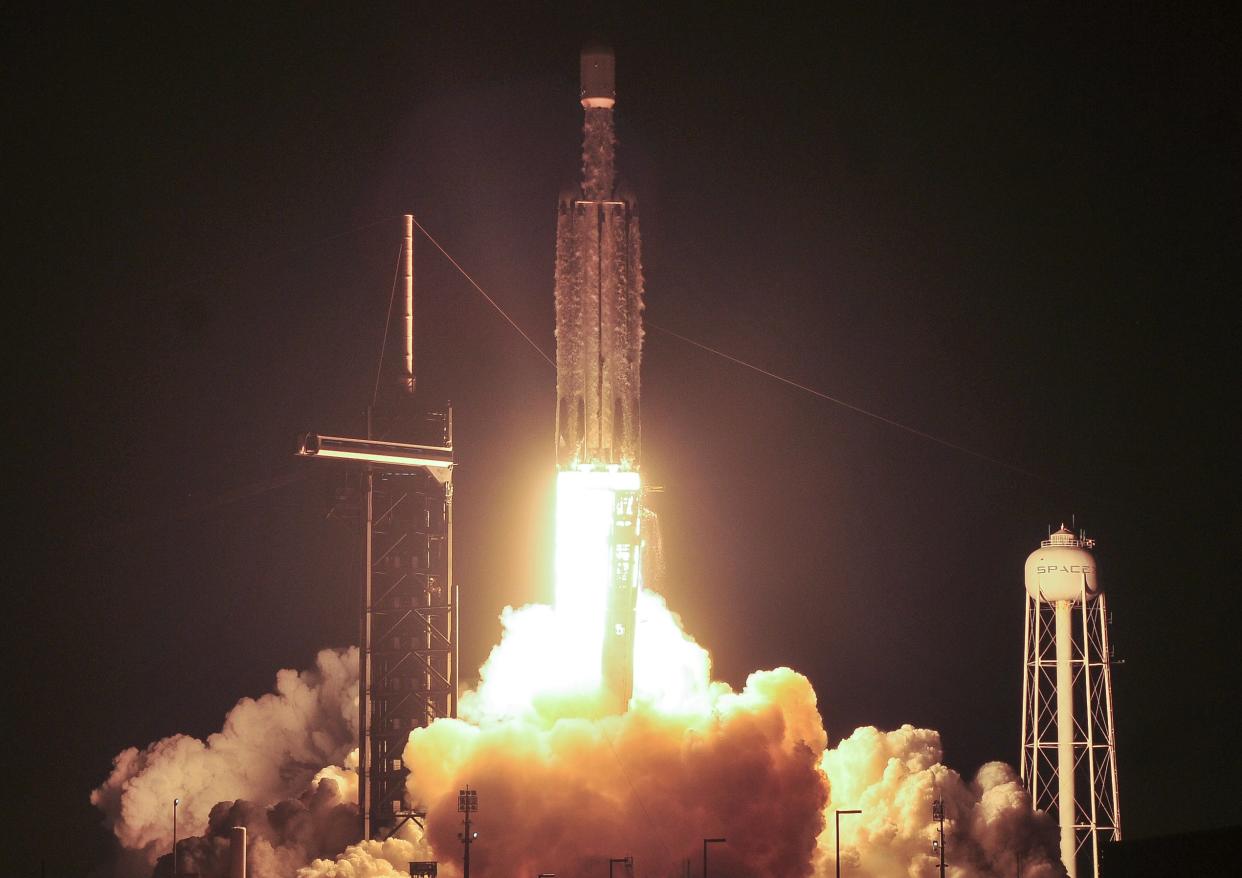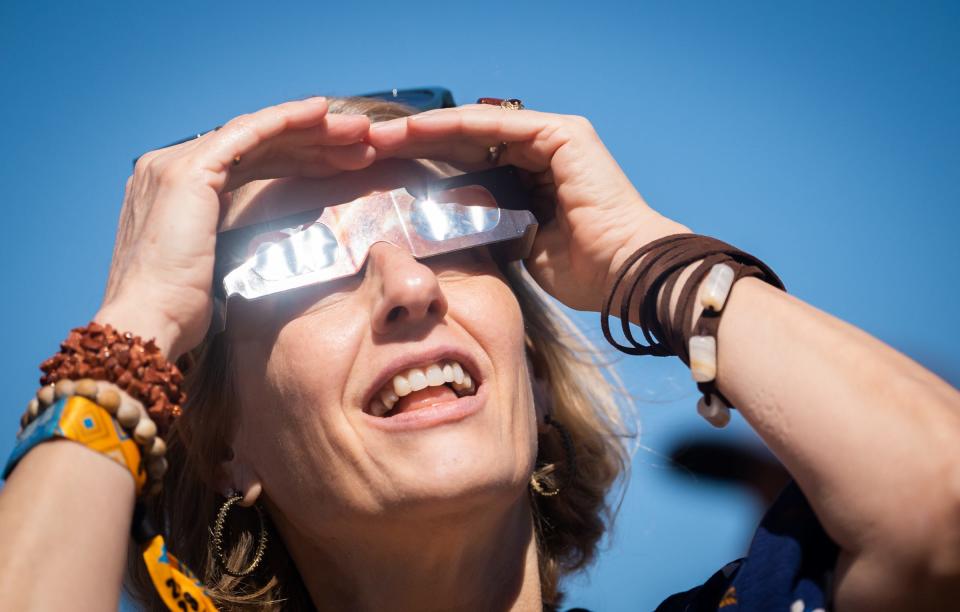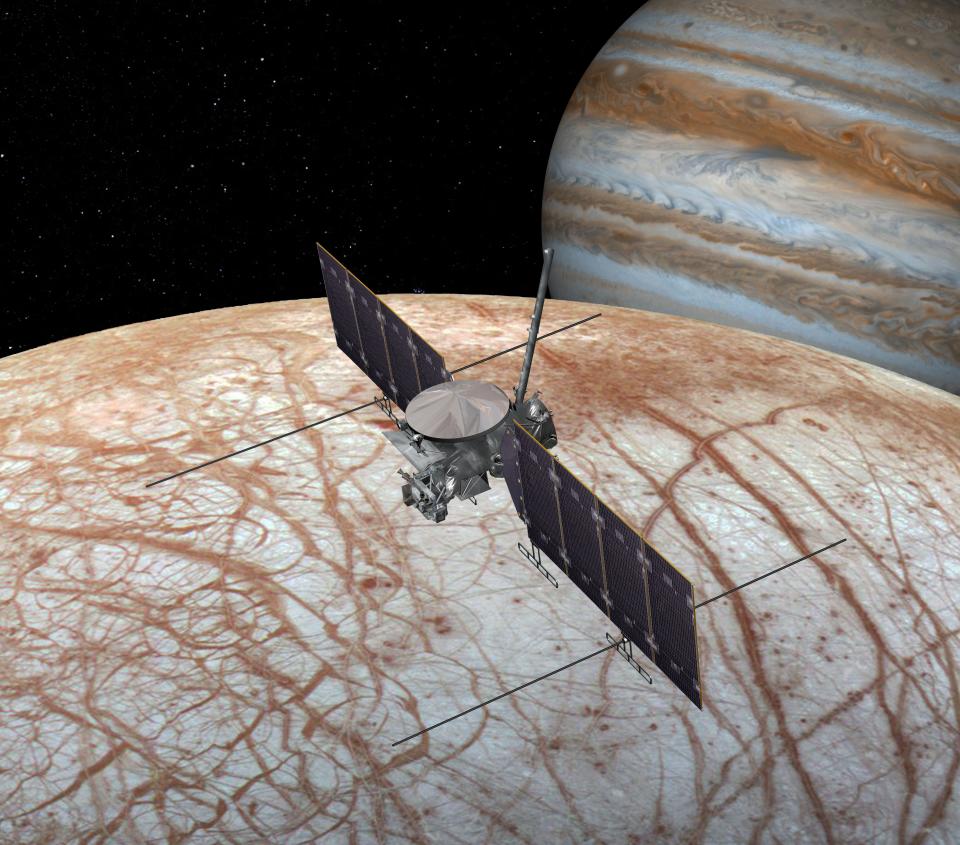A return to the moon and a rare eclipse among 5 great space events on the horizon in 2024

Last year was one filled with planetary discoveries, interstellar journeys and other space-related milestones that were equal parts wondrous and strange.
News of mysterious exoplanets that potentially support life, speculation about UFOs and the launch of uncrewed missions to the far reaches of space defined 2023. Fortunately, those who were left filled with awe and excitement of the vast cosmos that surrounds Earth have even more to look forward to in the year ahead.
Here's a look at five cosmic stories to expect in 2024, from a rare eclipse to astronauts' first return to the moon in decades.
Recapping 2023's wild year in space: UFOs, commercial spaceflight, rogue tomatoes and more
NASA's return to the moon

In the years ahead, NASA will aim to put astronauts back on the moon for the first time since the Apollo missions came to an end five decades ago.
But before that can happen, the space agency must first send a group of spacefarers on a trip around the moon and back. Last year, NASA introduced the three Americans and one Canadian who will be part of the Artemis II mission, which is set to launch as soon as November.
Their 10-day journey spanning 600,000 miles will see them circumnavigating the moon – but never touching down – to test the capabilities of NASA's Space Launch System rocket and a crewed Orion spacecraft needed for deep space exploration.
The Artemis program represents NASA's renewed interest in lunar missions. When the day comes that the crew of Artemis III are able to set foot on the lunar surface, they will be the first Americans to do so since the last Apollo mission in 1972.
Uncrewed lunar missions ahead
India became the fourth country to land a spacecraft on the lunar surface last year after the successful touch-down of its Chandrayaan-3 probe.
Even more attempts to send uncrewed landers to the moon are slated for 2024.
Japan will make the first attempt Jan. 20 after its small spacecraft called SLIM launched in September and continues to orbit the moon.
While the United States hasn't attempted to land a vehicle on the moon's surface since the 1970s, NASA is a customer for two private companies attempting the feat this year. Astrobotic, a Pittsburgh company, will launch its Peregrine lunar lander on Jan. 8, which could land in February. Houston-based Intuitive Machines will launch another lander aimed for the moon’s south pole as early as mid-February.
Total solar eclipse over North America

On April 8, a total solar eclipse will travel on a diagonal path, cutting across a wide swath of North America and shrouding millions of people in darkness.
It's been six years since the last time the moon completely blocked the sun's light from reaching a portion of the United States, and it will be even longer until it does so again. After this year, the rare celestial event won't occur for another 20 years, NASA says.
The moon's shadow will first blanket Mexico's pacific coast in darkness as it travels northeast into Texas. The path of totality will cover another 11 U.S. states before ending in Maine and crossing into the maritime provinces of Canada.
While spectators will want to don specialized protective eyewear to shield themselves from the sun's powerful rays, a total eclipse is a rare opportunity to view the event with the naked eyes. Just make sure the moon is completely blocking the sun's face before removing your specs.
Era of commercial spaceflight grows

Last year, Virgin Galactic helped usher in the dawn of commercial spaceflight by regularly offering rides to the edge of space for paying civilians.
The company owned by billionaire Richard Branson, as well as its competitors like Blue Origin, are expected to continue selling tickets to wealthy customers who crave the experience of a few minutes of weightlessness – coupled with a view of Earth that can't be beat.
Virgin Galactic's sixth civilian customer mission is expected in January, while Jeff Bezos' Blue Origin will likely resume civilian flights at some point in 2024 after a successful uncrewed science mission in December.
Elsewhere, private astronauts continue to travel to the International Space Station to conduct scientific experiments.
As early as January, the first all-European commercial astronaut crew will embark for the ISS as part of Houston-based company Axiom's third mission to the station.
Last August, NASA itself teamed up with Elon Musk's SpaceX to begin offering a commercial crew program ferrying trained astronauts to the ISS for science missions. The eighth crew is targeted to launch no earlier than mid-February
The partnership with private industry frees up NASA to focus on building spacecraft and rockets for deep space missions.
Solar activity: NOAA detects largest solar flare since 2017
Investigating Jupiter's moon for signs of life, and other cosmic missions

NASA's largest spacecraft developed for planetary missions will make its long-awaited departure later this year to Jupiter's moon Europa, which scientists believe may have the right conditions to support life.
While Europa's exterior is icy, it conceals a vast ocean beneath the surface that could harbor signs of life. The Europa Clipper, which will launch in October, is hoping to find them.
It won't be until 2030 that the uncrewed craft arrives at Europa. When it gets there, it won't land on the surface itself, but will instead conduct numerous flybys near the surface to scan and study the moon.
NASA also plans to send two crafts to Mars sometime in 2024 to orbit and study the red planet, and for its EscaPADE mission, while the European Space Agency will launch its Hera mission in October to fly by a decimated asteroid.
The Hera mission is a follow-up to a NASA mission from 2022 in which the space agency successfully crashed a spacecraft into an asteroid known as Dimorphos. The earlier mission was the first test of the agency's planetary defense strategy for asteroids, dubbed the Double Asteroid Redirection Test, and now the ESA wants an up-close look of how it went.
Eric Lagatta covers breaking and trending news for USA TODAY. Reach him at elagatta@gannett.com
This article originally appeared on USA TODAY: Return to the moon and rare eclipse: Top space stories of 2024


